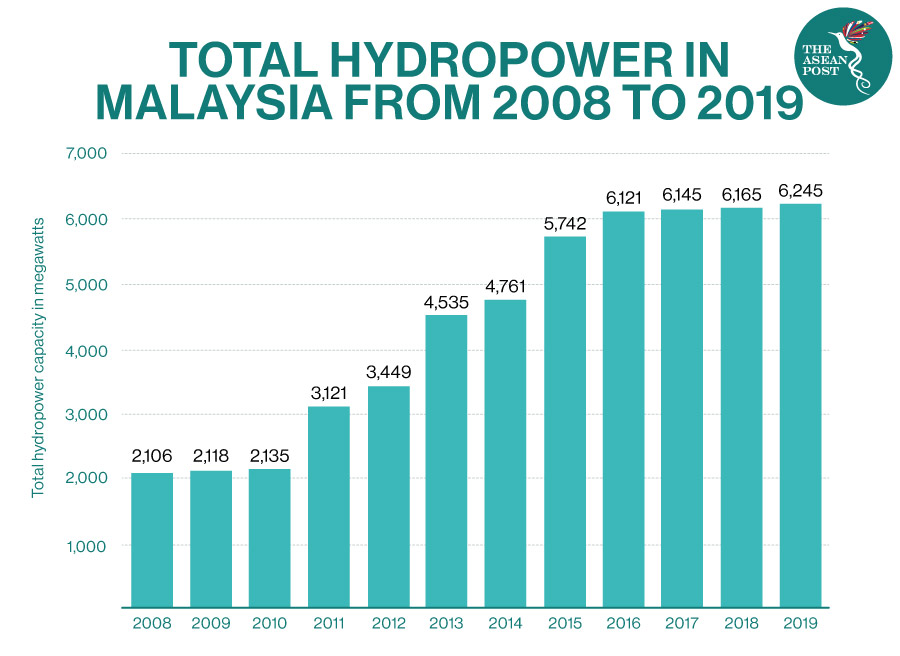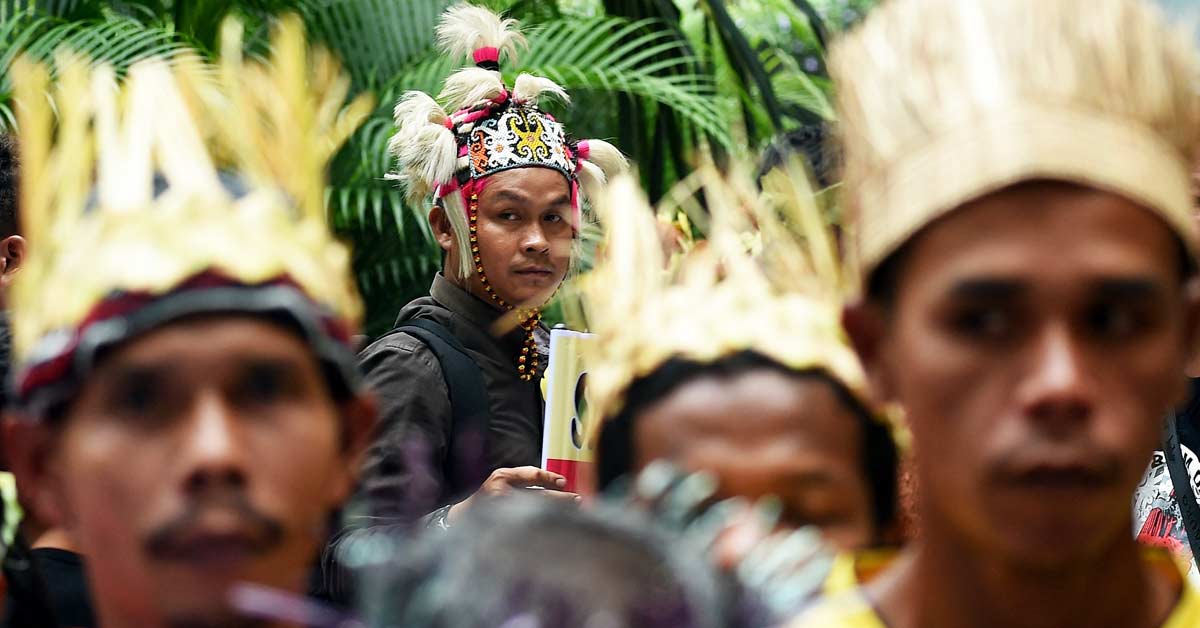The advantages of a hydroelectric dam are many. A hydropower plant can generate power to the grid immediately, provide essential back-up power during major electricity outages or disruptions, in addition to being a sustainable fuel source, along with a number of benefits such as flood control, irrigation and water supply.
But whenever a hydroelectric dam project is mooted – doesn’t matter where – it will always be opposed by environmentalists and the people living in the area where the dam is to be built.
We can understand the opposition to the dam by the people living in the affected area but what about the environmentalists, are they just too much? Not necessarily.
Hydropower has been the leading source of renewable energy across the world, accounting for up to 71 percent as of 2016. This capacity was built up in North America and Europe between 1920 and 1970 when thousands of dams were constructed.
From then on, the hydropower industry moved to building dams in the developing world and since the 1970s, began to build even larger hydropower dams along the Mekong River Basin, the Amazon River Basin and the Congo River Basin.
However, in the late 1960s, big dams were no longer being built in developed nations, because the best sites for dams were already developed, the costs became too high, and most importantly, growing environmental and social concerns made the costs unacceptable.
Since then, the contribution of hydropower to the United States’ (US) electrical supply has steadily declined to 6.1 percent of energy consumption, while other energy sources, such as nuclear, gas, coal, solar, and wind, began to replace it. Dam removal rather than construction has become the norm in North America and Europe.
According to a 2018 study, many large-scale hydropower projects in Europe and the US have been disastrous for the environment. The same problems are being repeated – disrupting river ecology, deforestation, losing aquatic and terrestrial biodiversity, releasing substantial greenhouse gases (GHG), displacing thousands of people, and altering people’s livelihoods plus affecting the food systems, water quality, and agriculture near them.
In fact, the study on “Sustainable hydropower in the 21st century”, which was an inaugural article of the proceedings of the National Academy of Sciences of the United States of America, discovered that dozens of dams that were part of large-scale hydropower projects in Europe and the US are being removed every year, with many considered dangerous and uneconomical.
The study also bemoaned that the unsustainable nature of these projects has not been recognised in the developing world, as new dams are now being planned for rivers in Africa and Asia.
Malaysia’s New Dams
Here comes the irony – as the West is giving up on building new hydroelectric dams, and are dismantling them – in Malaysia, the construction of the Papar dam project in the East Malaysian state of Sabah and the Nenggiri dam in Gua Musang, in the West Malaysian state of Kelantan will begin soon.
In the case of the proposed Nenggiri dam project, more than 3,000 Orang Asli (indigenous people) from 17 districts and hundreds of villages in Kelantan objected to the construction of the dam by the Kelantan state government, saying it would destroy 5,384 hectares of customary land and Orang Asli territory.
As for the Papar dam, the Sabah state government is mulling the possibility of moving the dam back to its original location in Penampang because if the dam was built in Papar it could only provide water for up to 60 years, whereas if it were moved to Penampang, it would be able to provide water for 85 years.
This drew a sharp response from The Socialist Party of Malaysia or Parti Sosialis Malaysia (PSM) calling for the Sabah state government to scrap the project, as it is not feasible and a colossal waste of money.
Speaking to local media, PSM’s central committee member Sharan Raj said while his party supports infrastructure projects that will help the public at large, the dam project is not going to help anyone.
He urged the state government to invest in reducing its non-revenue water (NRW) rate and improve its electricity transmission and distribution system instead. Adding that It would be good first and foremost to focus on flood mitigation and then spinning it off to power generation and agriculture objectives.
How can this be done?
Take the case of Kelantan. Every year, heavy rainfall coupled with high tides threaten the return of floods. Due to the lowland nature of Kelantan, the Kelantan River regularly overspills its banks during the months of November to February because of the northeast monsoon season.
Flood Mitigation
Undertaking a flood mitigation project via the deepening of the Kelantan River using dredges and other suitable equipment will ensure the smooth and efficient flow of water in the Kelantan River, and the removal of sediments will prevent the spread of contaminants to other areas of the water body.
Some parts of the river which meander and prevent a smooth and efficient flow should be straightened. The small islands and sand banks which dot the river should also be removed.
Under this flood mitigation project, the river banks would be raised to a level such that water during the monsoon or flood season would be contained and not overflow its banks. Or better still, a dam on both sides of the river can be built for this purpose.

But unlike a traditional dam that is often used for the dual purpose of flood control and to generate hydroelectric power with its concomitant displacement of people and inundating large areas of forest lands and farm lands that have to be flooded, not to mention the negative impacts on the environment, these two dams would be created after the deepening of the Kelantan River.
The improvements to the Kelantan River via this flood mitigation project will create 'new lands' on both sides of the river bank. These lands would be suitable for the installation of a state-of-the art solar farm producing more than 300 megawatts (MW) on one side of the river bank, and the construction of a four-lane highway on the other side.
And since its new lands we’re talking about, there will not be any displacement of the Orang Asli or any environmental impact on flora and fauna. On top of this, there would still be power generation – in the form of renewable energy through the solar farm project.
The flood mitigation project alone will create thousands of employment opportunities, as the river flows past seven important towns, from south to north – Kuala Krai, Tanah Merah, Machang, Pasir Mas, Tumpat, the state capital Kota Bharu, as well as Pengkalan Chepa, which lies near the mouth of the river.
As mentioned earlier, the river banks will be raised to a level which will prevent flooding by the construction of two dams, one between the river and the solar farm on one side of the river bank, and the other between the river and the proposed highway on the other side.
Most important of all, with the flood mitigation project, water quality in Kelantan will be much improved and would benefit not only the river fishermen but also paddy farmers under the Kemubu Agricultural Development Authority (KADA) who are dependent on the irrigation canals.
Presently these canals are silted up and problematic for maintenance due to the muddy waters of the Kelantan River.
With good water flow, the Kelantan River Delta will also provide a natural environment for the aquaculture industry to thrive. With some improvements to the water depth and improved brackish water flow system, many hectares of world class aquaculture farms can be created giving employment opportunities to the local people, especially the many unemployed graduates in Kelantan.
Related Articles:

